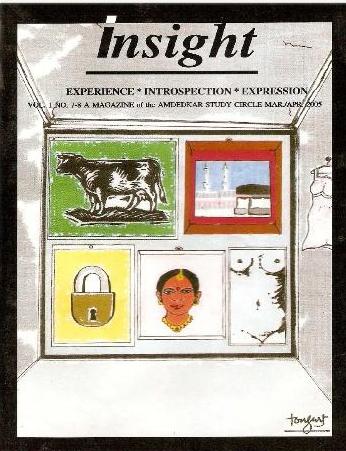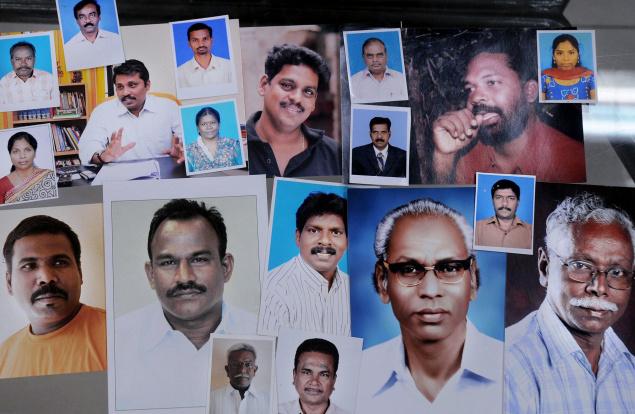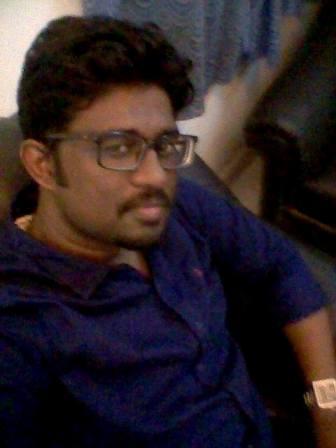Dalits in Nepal: Politically Manufactured Karma
The facts on the ground
Suresh Singh
(First published in Insight magazine in 2005)
Dalits are groups of people considered as ritually impure and imagined as living apart from the “mainstream society”. This poorly understood community is called untouchables or Dalit, a term borrowed from India. The literal meaning of Dalit in the Nepali dictionary is “the person who is suppressed”. An intellectual Dr. Drona Prakash Rasali proposes the word “Karmajan” to refer to, in a more dignified manner, the people of occupational castes in Nepal.
In the context of Nepal, there is no consensus on definitions as well as on the number of Dalit communities. Based on prevailing social practices, the National Dalit Commission identified 22 major castes as Dalit. In 1997, Dalit Vikas Samiti identified 23 various cultural groups as Dalits, and Dalit Ayog (formed in March 2002) forwarded the Bill to the government identifying 28 cultural groups as Dalits in Nepal.

There are three distinct groups of Dalits in Nepal: – 1. Hill Dalit. 2. Newar Dalit. 3. Tarai Dalit.
The jats (castes) consisting the Hill Dalit are Kami (metal smiths), Sarki (leather workers), Damai (tailors, musicians), Gaine (singers) and Badi (village entertainers).
The Newar Dalit consists of Chyme, and Halahu, considered as untouchables, belonging to the Newar community, which is centered on Kathmandu valley. They belong to the Austro-Asiatic and Mongoloid stock speaking Newari, a Tibeto-Burmese language. The Tarai Dalit group is same as the Indian Dalits racially and culturally; they constitute the majority of the people that have moved to the plains of Nepal mainly from the neighboring areas of Uttar Pradesh and Bihar before and after the Indo- Nepal Treaty of 1950. The proportion of upper castes: Brahman, Rajput, Bhumihar and Kayastha — to this caste groups is not more than 1.6%. The Dalit castes are: Chamar, Musahar, Tatma, Khatwe, Dusadh, Dhobi, Dom, Pasi, Paswan and Halalkor.
Manufacturing Untouchability
In 14th century, Jayastithi Malla of Kathmandu valley legally classified the Newari people into 64 castes to maintain the class hierarchy and division of labour for easy extraction of revenue. In the western and central mountains of Nepal, terms such as Kami, Sarki and Damai existed depending on the nature of arts and crafts that the people of the Mongoloid and the Austro-Asiatic descent followed. There is no evidence of these comprising the castes.
In 16th century, we hear of few Kami, Sarki, and Damai along with the brahmans accompanying Dravya Shaha from Lamjung to settle in Gorkha. Gradually, this mountainous region emerged as a constellation of scattered principalities.
Expansion of agriculture and clearance of land was accompanied by the Shakti or Devi worship serving as a fertility cult. With regular taxation and the maintenance of an army, the military officials and priests controlling the land created inequalities- resembling a sort of feudalism.
The people performing manual labor came to be looked upon as impure and those abstaining from it became purer; by the 18th century the artisans and craftsmen in this region came to be regarded as untouchables. The idea of sanctity or purity became the dominant discourse in society, contributing to the idea of God and religion, and molding the idea of people’s existence.
The royal brahman priests used to play central roles in diplomacy of conquests and relations among the Rajas through the medium of letter exchanges and the news transmitted by reporters and spies, who were also the brahmans. The killing of a brahman and a guru was considered as a mahapapa (great sin) and mahaapradha (great crime); these are also mentioned in the medieval inscriptions. Thus, a brahman was not given death sentence for his crimes.
Five types of serious punishments were awarded to criminals called panchakat- confiscation of property, degradation from caste, banishment, mutilation and death. Degradation of caste was the most severe penal action for the brahman; his holy thread was torn off, head shaved and a small pig was hung on his neck; another way was to make him drink wine and eat pork. He was declared as an untouchable, considering it as equivalent to death. Crimes like murder, spying, and conspiracy against the state committed by a brahman were punished with caste degradation. This punishment was inflicted often on those, regarded as the enemies of Gorkha Raj.
We can see few popular instances: the jaisi brahmans of Belakot had planned to hand over the crown prince Pratap Singh Shaha of Gorkha to Jaiprakash Malla of Kathmandu. On discovering it, King Prithvi Narayan Shaha degraded the jaisis from their caste to untouchable status, got them killed and their property was confiscated. In 1837, the physicians (brahmans) who were suspected of poisoning the prince as directed by Bhim Sen Thapa were made untouchables.
In the 19th century, the process of hinduisation and sanskritisation was accelerated and enforced by the state. Certain existing practices like cross-cousin marriage (with maternal uncle’s daughter), levirate, and marrying the elder brother’s widow including the widows of cousins were declared illegal for the brahmans and khasas (Chhetris) during the primeminister-ship of Bhim Sen Thapa who defined these relationships as incest. Sati, child marriage, and widowhood were imposed.
The Muluki Ain: Criminalization of marriage practices
In 1853-54, Prime Minister Jung Bahadur Rana introduced the legal code called Muluki Ain. This divided society into Tagadhari-Upadhyaya, Thakuri, Jaisi, Chhetri, and Sanyasi; Matwali (communities to whom alcohol is not a taboo). These were in turn arranged into enslavable and unenslavable; Pani nachalne chhoi chhito halnu naparne (touchable but water unacceptable).
Further distinctions were made for Muslims, Europeans- Britons and Newar castes. Outside the mainstream society were the pani nachalnechhoi chhito halnu parne (water unacceptable and untouchable) Sarki, Kami, Sunar, Chunara, Hudke, Damai, Gaine, Badi, Chyame, Halahu. Except the last two Newar Dalits, the Hill Dalits are listed in accordance with the existing terms associated with works under the untouchable realm.
The Ain uses the term ‘untouchable’ and ‘lower caste’ for them in the chapters consisting of rules and regulations and not as separate castes. Nowhere, the Ain treats them as a part of the society but as casteless people. In the Muluki Ain, the chapter titled “Dharmaadhikar ko” is full of stipulations, on violation of which, the tagadhari was degraded to the untouchable status. The crimes for such a punishment in Ain are – Adultery, sex with untouchable, marriage with untouchable, a woman undergoing abortion, accepting rice, pulse and water from untouchable, and from the people of Jhana pana sect (heretics), revolt or conspiracy against the state (only brahmans were made untouchables for this crime, others were killed), and marriage and sex relations with the relatives (especially cross-cousin marriage and marrying the widow of elder brother).
The royal authority used to appoint the Dharmaadhikars or the judges from the upadhyaya brahman caste. The person accused of a crime was presented before the court of the Dharmaadhikar who would brand him as an untouchable. Such a person could re-join his caste after a purification ceremony but he had to obtain a certificate called patiya from the judge to undergo such a ceremony on payment of heavy fine and in most of the cases his property was confiscated by the state. According to the Ain, the Judge could issue such a certificate only to those persons who had committed the crime “unknowingly”.
Crimes like marriage with the untouchable and conspiracy or revolt against the state were unpardonable and no patiya could be issued for these crimes. If it was found that the accused had committed the crime in full consciousness, the judge could issue patiya only through royal permission; the accused had to approach the palace and prove his innocence to get the permission and this was not an easy task for every one. The Ain did not spare the judge also; if he issued the certificate before branding the accused as an untouchable and had taken rice or water from him, the Judge himself would be dismissed and degraded to untouchable status. The officials who had assisted him also face the same punishment; if the officials and state functionaries helped the accused person in getting certificate by taking bribe then they would have to submit to the same fate.
This Muluki Ain continued till 1963 but the degradation of caste through marriage with untouchables still continues in Nepali society everywhere.
Untouchable Brahmans
Untouchability was equivalent with death, and the untouchables were out of the social system as casteless. Large number of brahmans, and few thakuris and chhetris who had become untouchables were worried about their status and for the future of their children. They tried to create a space in a society or a system by creating an identity, which could be possible only by forming themselves into castes and by strengthening their castes. This they did, by converting the existing terms associated with work into castes- 1. Kami-Sunar, Tamta, Chunaro, Od, Lohar. 2. Sarki. 3. Damai. 4. Gaine- Gandharba. Population size and the economic status were the factors for arranging these castes into high and low. The larger the number of brahman clans the higher the caste- they became Kami if they were having the largest number of degraded brahmans and the gaine if the lowest. In course of time, the caste became a self-enclosed unit limiting social intercourse with other caste including messing, marriage, etc.
Demography
The size of the population of Dalits ranges from 2 million to more than 4.5 million in various sources. The censuses are not of much help. The total population of ten Dalit groups as enumerated in the 1991 census was 2,201,781 (11.9%) of the total population of Nepal. But the census has not provided figures of many Dalit groups in the Newari community and the Tarai community. The census of 1991 and even the latest census (2001) have put all the Newar Dalits under the ethnic/linguist designation of their larger group. Some of the Newars have protested their inclusion in the list but they do not seem to represent the sentiment of the concerned people as a whole.
According to the 1991 census, Kami ranks the highest (43.8%) among all Dalits groups with 5.2% of the Nepalese, and damai- 2%. The lowest number or the minority group (less than 5,000 in number) is gaine. In the Tarai, the chamars have the highest number. The females outnumbered males by little more than 0.6 per cent. The young population (below 15 years) accounted 44 per cent of the total population.
According to the Human Rights Watch (2004), some NGOs estimate Dalit population at 4.5 million or 21 per cent of Nepal’s population. The Dalit activists cite the figure of 25% that also includes the “touchable but water unacceptable” jats of Newars: – Kasai, Kushle (Kapali), Dhobi, Pode, and Kulu.
The censuses identify the bahun (brahman), thakuri (rajput) and the chhetri (khasa) as the major groups of Nepal. The 1991 census gives the figures as: – bahun- 14%, thakuri- 1.62%,and the chhetri- 16.05%. The census of 2001 keeps the bahun population at 12.74%, thakuri at 1.47% and chhetri at 15.8%. Censuses include the hill Dalit people in the bahun and chhetri castes, which is facilitated, as almost all the clans of the Hill Dalit are same as that of bahun and chhetri such as adhikari, koirala, khannal, etc. We can see that the thakuri is shown in less numbers- 1.62% (1991) and1.47% (2001) because the hill Dalit castes do not have more than three or four similar clans as that of thakuri; so it is not possible to include the large number of hill Dalits in thakuri caste.
In the Karnali region and the far-west, khasa is the largest ethnic group, having its own language and shamanism as a religion. During the 17th and 18th centuries, a small section of elite had emerged in it called thread-wearing khasa belonging to the clans of thapa, basynat, khadga, and karki. These elites had undergone the process of Hinduisation and Sanskritisation; in 1854 they were given the title of chhetri (derived from Sanskrit kshatriya) and included in the tagadhari category by the Muluki Ain. The descendants of the chhetris from the magar or gurung women are considered as matwali chhetri, and in most of the cases they take the caste of their mothers; those chhetris who marry bhote women also are granted the matwali status. But the large numbers of khasa who follow shamanism are untouchables belonging to the caste of Kami.
Academic Categorization as Discrimination
Scholars like Dor Bahadur Bista do not have the courage to write this fact; they only say that they are khasa or khas– shamanic and alcoholic. Their silence is understandable that they want to suppress the history of the large chunk of Dalit population. During the 12th and14th centuries, a vast khasa empire existed including the western Nepal, Uttaranchal, Ladakh, and parts of Tibet bordering Nepal centered sometimes at Sinja and sometimes at Dullu. During 15th century, it broke up into small confederacies that were swallowed by the thakuri kingdoms. The khasa mallas were admitted into the thakuri caste, the small elite from four clans into chhetri and others who follow shamanism as kami. After the archeological excavations by Giuseppe Tucci and Yogi Naraharinath, and their books The Discovery of the Malla (1962) and Preliminary report (1956), and Itihas Prakash (1956), no research has been undertaken on the khasas. Thus, depriving the Dalits of their past.
Development index
The Nepal Human Development Report 2004 says that 15% Hill Dalits were landless and 43.98% of the Terai in 2001. About 54% of Dalits depend on agriculture. Caste- based traditional work (such as blacksmiths, leatherworkers, tailors etc) is becoming unimportant due to rudimentary skills of the traditional workers not being able to cope up with technological advancement. Regarding the economic condition, TEAM Consult (1998) found the population below the poverty threshold level being highest among untouchables (68%), followed by the Tagadhari (61.3%) and Matwali (58.5%). The highest proportion of Tarai Dalit has food deficiency (46.4%). Many of them also have debts from buying additional grains. The main economic activity of majority of Terai Dalits is wage labour.
The domination of tagadharis and small number of matwali in the public sector has developed the coalition for institutional corruption and nepotism, creating difficulties for competent Dalits to get into the public services. This leads them to seek space in private sectors, and in showing their talent independently in music and film industries. Popular folk singers- C.K. Rasaily and Late Jhalakman Gandharba, Deepa Jha, renowned film director Tulsi Ghimire, and renowned music composer Ranjit Gajmer, etc are few to name. The illiterates and under-graduates move to India, Gulf countries, Malaysia, and Japan, etc for short term and long term jobs.
The Human Rights Watch (2004) saw Dalits serving only as a vote bank for the political parties. The gender issue is taken in its narrow sense as ‘femininity’; it is a systematic trick that again brings power to the same households; tagadhari and matwali women would get more opportunities. While Dalit women are neglected and oppressed in a double jeopardy resulting from caste and gender discrimination.
Academic misconceptions and research avenues
There is a pre-conceived notion that Dalits are poor and suppressed. Scholars tend to exaggerate, and the Dalit activists, except few, have not been able to study the situation and condition in rural areas where 85% of the Nepal Dalits live, because most of the activists live in cities and towns (mostly Kathmandu based) and tend to rely on the imagination, electronic and print media. For instance, writers say Dalits are denied cow’s milk; here they suppress the significance of buffalo domestication. In Nepal buffalo is the animal yielding milk, but it is printed on papers that it has a role in only 65% of the total national milk production.
Cow in Nepal is small and does not give much milk which is used for religious purposes, and cow is reared for worshipping and as gifts in marriages, and ceremonies to pandits, daughters, sisters, etc. It costs only 500- 700 rupees. Activists and scholars should go to villages and study the situation radically. Two or three villages can be taken for fieldwork and studied. Attempts at taking study of a district or even a large area consisting of several villages would lead to generalizations because different conditions exist at different places. Economic status of Dalits and other castes should be compared in a village without any pre-conceived notion.
In the villages of central and western Nepal, for instance in Syanja and Palpa, hardly any economic difference exists between the hill-Dalit, matwali and the tagadhari. In the far west- such as the hill villages in Dailekh, and Jajarkot, one can see that Dalit households are on the top of the barren hills, while non-Dalits have captured all fertile land. There is also a typical pattern: a poor Dalit will raise a female young buffalo calf or dry buffalo cow owned by a tagadhari landlord on very unequal contract. Once the buffalo is confirmed for pregnancy, its owner takes it away. The family, which worked hard to make the buffalo pregnant, never gets chance to taste its milk.
This region is one of the poorest in Nepal, resulting in conflicts for land, cattle, green pastures. Dalits are viewed as socially inferior by everyone, which makes them vulnerable to the competition for resources. Even the brahmans are forced to compromise and sometimes move to other areas due to the behavior of the landlords. Often, we can hear of a poor brahman saying, “Khas doesn’t let us live in peace, they do not respect Brahmans, they are a demonic race.
Reservations
Dalits in Nepal need a separate identity of their own for their well-organized movement; this can only be achieved through constitutional recognition with a provision of reservation for them like in India. The Tribhuvan University had announced 15% student quota in professional courses like BE and MBBS for Dalits as per the government’s directives in 2004. But the Supreme Court’s verdict given by a division bench of Justices Min Bahadur Rayamajhi and Anupraj Sharma annulled TU Board’s decision stating that any reservation for the socially and economically backward class should be made only after formulating relevant laws.
Dalits have established various non-government organizations to fight against caste based discrimination getting aid from international agencies such as World Bank, European Union, USAID, and more than hundred INGOs like Action Aid Nepal, etc. The Hill Dalit dominates NGOs, and for the youngsters it has become a career option. According to the INSEC magazine Informal- June 2004, the Kami caste people are controlling 75% of the NGOs followed by the Damai- 17%.
Temple entry
In 1963, through the promulgation of New Civil Code (Mulki Ain), degradation of caste and discrimination were made illegal. Soon after this, Dalits made attempts to gain access to the Pasupatinath temple. The government reacted quickly and stated that the caste system was not abolished. It cited Section 10 of the subject entitled Adal ko (on disciplinary matters), it warned, “those who indulge inactions prejudicial to the social customs andtraditions of others will be punished”. The punishment granted by the section was imprisonment for one year or a fine of Rs.1000.
In Nepal many Dalits personally visit temples especially in urban areas and worship there but they are not allowed enter if they make declaration and come to streets to gain access to temple. In other words, temple entry movement is not about Dalits just wanting to be inside the temple, but it is about a symbolic action for being treated equal with other castes in public places like temples. This is a fact that other caste people also clearly know, and hence they retaliate to stop the temple entry movement from succeeding.
Monarchy or democracy?
The caste rules and hierarchy among the castes are not based on mutual agreement. These exist in a society because they are the part of a system even if the Constitution of the Kingdom of Nepal, 2047 (1990), Article 11(4) forbids discrimination against Dalits. One can say the recent Royal takeover of country’s powers for the King’s direct rule as an absolute monarch is conceivably a setback to the ongoing Dalit movement, though its effects are not only on Dalits in Nepal but also every sphere of the country’s well being. Another view is that had it been under a Monarchy, the Supreme Court judges would not have gathered courage to stop the TU’s decision to give reservation to the Dalits when the Government had directed the TU to do so. One can remember that during the monarchy, Hiralal Biswakarma was a Dalit Minister for a long time.
~~~
[Courtesy: INSIGHT, March-April 2005]
Image:Cover picture of the March-April 2005 issue of INSIGHT.










